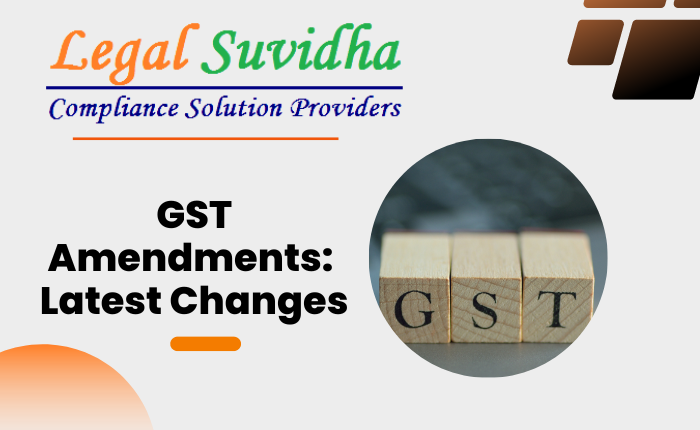The Goods and Services Tax (GST) system in India is like a set of rules that keeps changing to make taxes fair and easy for both people who pay taxes and the government. Imagine it as a puzzle where the pieces can move to fit better. In a recent 48th GST Council meeting has brought in important GST amendments to the GST system. These changes aim to make it simpler for people and businesses to follow the rules, help the government get back money that’s owed to them, and make sure that the numbers for taxes match up correctly. Let’s take a closer look at these ideas:
1. Sharing Bank Details (Rule 10A): One big GST amendments is to ask people who are registered to pay GST to share their bank details within a month of joining or before they give a report about what they’ve sold (called the GSTR-1/IFF report). It’s like sharing your contact details, so the government knows where to find you.
2. Automated Registration Suspension (Rule 21A(2A)): Other GST amendments within Rule 21A(2A), ushering in an automated registration suspension mechanism for entities that neglect to provide valid bank account details as required by Rule 10A within the stipulated timeframe.
3. Spontaneous Revocation (Rule 21A(4)): To alleviate the burden of compliance, an additional GST amendments is appended to Rule 21A(4), enabling the automatic reversal of registration suspension as triggered by the system. This reversion comes into play once the stipulated provisions of Rule 10A are adhered to.
4. Fixing Money Problems (Rule 88C and GST DRC-01D): In order to address disparities in output tax liabilities, another GST amendments is the introduction of Rule 88C and FORM GST DRC-01D is paramount. These frameworks are designed to facilitate the recovery of outstanding taxes and interest for the amounts indicated under Rule 88C. These amounts, which remain unpaid and lack satisfactory clarifications from the registered entity, can thus be pursued through these mechanisms.
5. Scrutiny of Input Tax Credit (Circular No. 183/15/2022-GST): The issuance of Circular No. 183/15/2022-GST signifies the establishment of a procedural approach for scrutinizing input tax credit discrepancies. This methodology comes into play when differences arise between the Input Tax Credit claimed in FORM GSTR-3B and the corresponding values available in FORM GSTR-2A for the fiscal years 2017-18 and 2018-19. A similar methodology is recommended for discrepancies arising between April 1, 2019, and December 31, 2021. This initiative extends significant relief to taxpayers.
6. More Checks and Balances (Rule 88D and FORM DRC-01C): Proposed GST amendments to the CGST Rules, 2017 involve the introduction of Rule 88D and FORM DRC-01C. These innovations propose a systematic approach to notifying taxpayers about instances of excessive Input Tax Credit availed in FORM GSTR-3B as opposed to the figures found in FORM GSTR-2B, surpassing a designated threshold. The process incorporates an automated compliance mechanism, allowing taxpayers to elucidate the underlying reasons for the variance or to undertake corrective measures.
In conclusion
All these amendments, the GST Council is suggesting want to make sure that everyone is following the rules, tax money is paid right, and problems are fixed quickly. This way, it becomes easier for everyone to do what they’re supposed to do, and the country’s tax system becomes better and more open.
If You have any queries then connect with us at [email protected] or [email protected] & Contact us & stay updated with our latest blogs & articles









